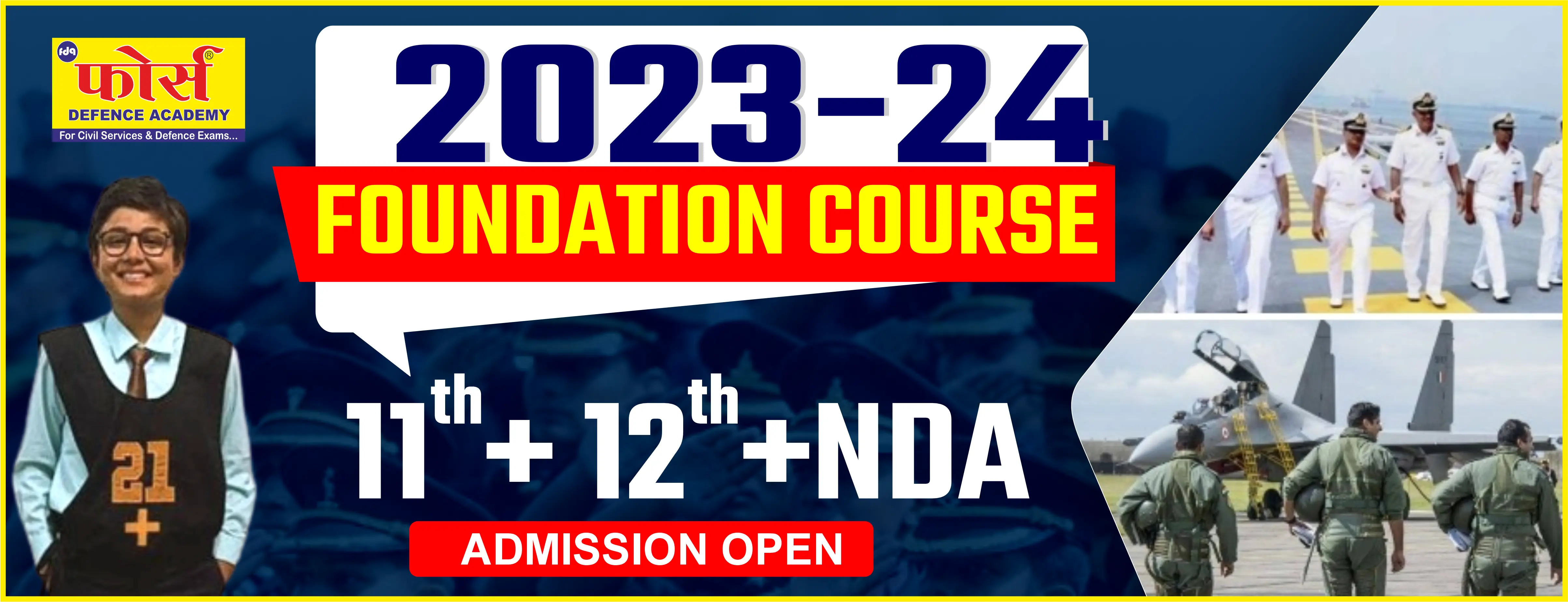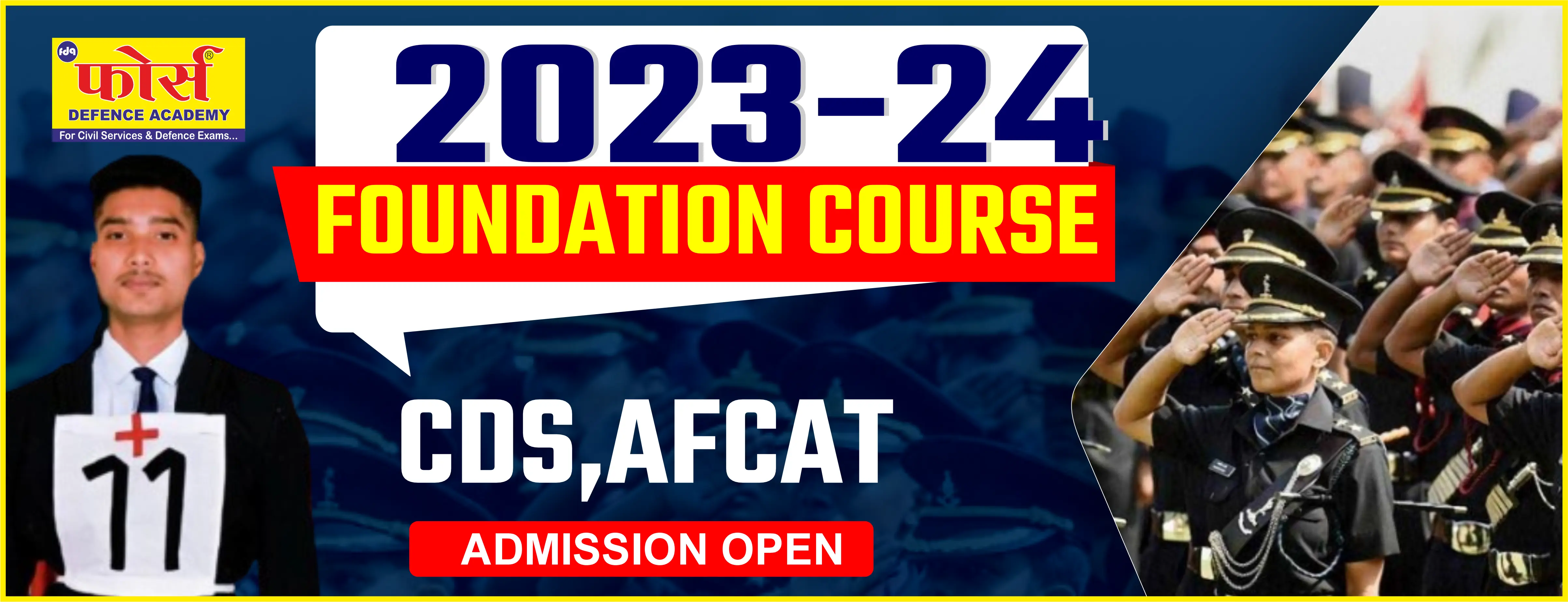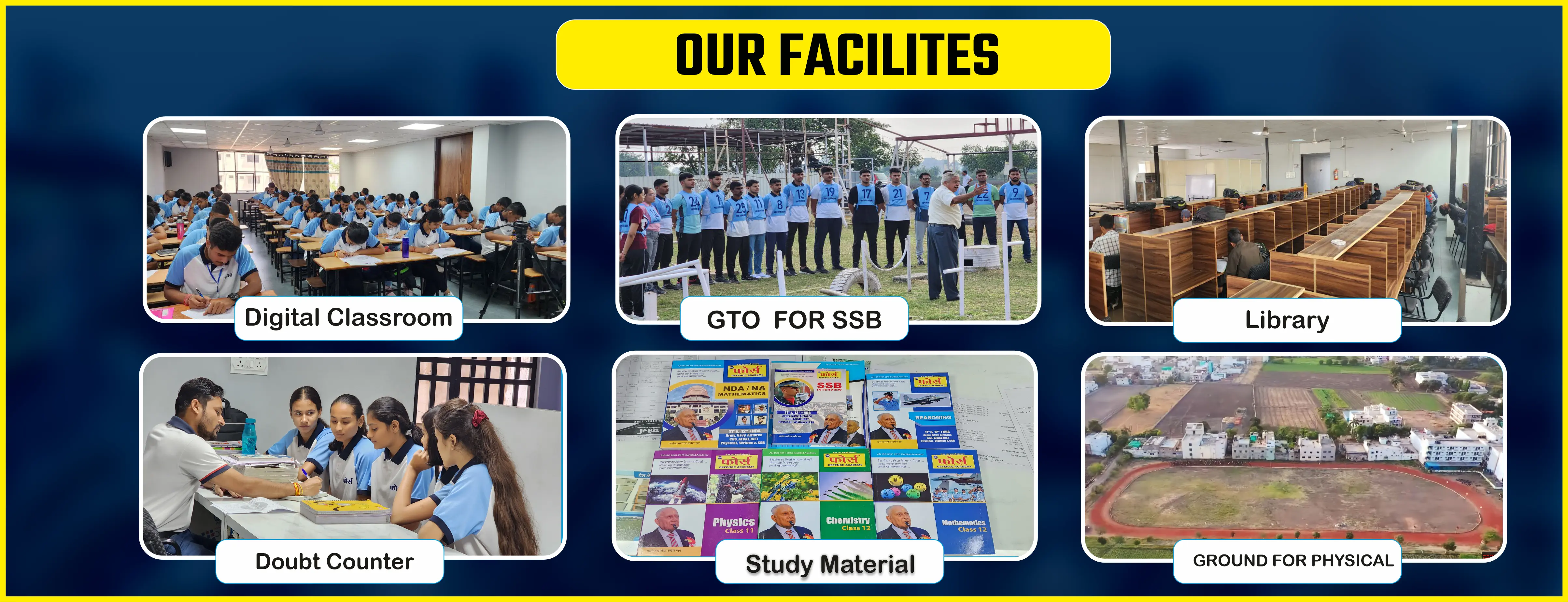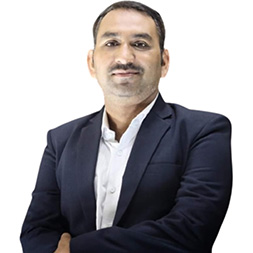


The UPSC is the conducting body of NDA exams. The recruitment of National Defense Academy and Naval Academy exams twice...
Combined Defence Services refers to the federal military forces of India. It consists of four professional uniformed services...
Indian Air Force holds the selection process for grant of Short Service Commission (SSC) in Flying Branch and Permanent Commission (PC)...
The Indian Air Force conducts the Group X & Y exam for the selection of airmen into the Indian Air Force. Indian Air Force Group X & Y...
Force Defence Academy is a renowned and leading Institute in Indore (Madhya Pradesh). The Institute trains defence aspirants & students to join the Indian Army, Air Force and Navy (and allied services like the Coast Guard etc.) at various levels of entry. In addition, students are also groomed for selection of Sainik School, RIMC, Military schools etc.
The major thrust is on entry into the prestigious exams like NDA, CDS, Sainik school and RIMC etc. Coaching for NDA written exam at Force Defence Academy (FDA) is handled by experienced professors & instructors who are experts in their subjects. FDA is the best Coaching in Indore for NDA, CDS and SSB preparations.

Force Defence AcademyForce Defence Academy helps you to develop your mind, skills and body-language to achieve your goal. It’s an opportunity to serve the nation in a best possible way.

Col.(Retd.)

Founder and CEO

GTO expert

Faculty Of Geography

Faculty of Mathematics

Head Physical Activities

Faculty of Mathematics

Faculty of Histroy & Polity
Lorem ipsum dolor sit am adipi we help you ensure everyone is in the right jobs sicing elit, sed do consulting firms Et leggings across the nation tempor Lorem ipsum dolor sit am adipi we help you ensure everyone is in the right jobs sicing elit, sed do consulting firms.
Lorem ipsum dolor sit am adipi we help you ensure everyone is in the right jobs sicing elit, sed do consulting firms Et leggings across the nation tempor Lorem ipsum dolor sit am adipi we help you ensure everyone is in the right jobs sicing elit, sed do consulting firms.
Lorem ipsum dolor sit am adipi we help you ensure everyone is in the right jobs sicing elit, sed do consulting firms Et leggings across the nation tempor Lorem ipsum dolor sit am adipi we help you ensure everyone is in the right jobs sicing elit, sed do consulting firms.